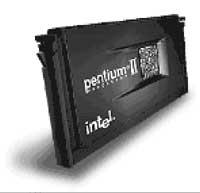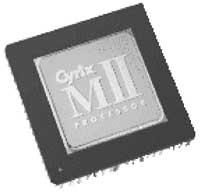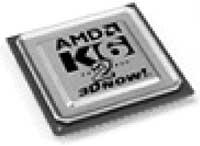Intel about to lose

Most computers currently on the market use Intel processors. Who have not been told about Pentium, Pentium MMX or Pentium II, or when the latest Celeron and Xeon microprocessors have gone to buy a PC? So far the fact that a PC had a microprocessor of the Intel brand was considered a symbol of quality and thus indicated also on the outside of the computer. Today, however, Inteli has been the target of enemies, as US companies Cyrix and AMD have eliminated an important part of the market by offering cheaper chips with similar features.
It is clear that computer manufacturers have chosen to lower prices, ensuring that they maintain performance so far. This has been possible thanks to the approval of the chips of the companies Cyrix and AMD, without looking at the brand of microprocessors. For example, the company Compaq Computer, which sells the most computers in the world, incorporates the Cyrix chip in its Presario 2100; even in some computers of the IBM Aptiva series, the prudent user will find the AMD K6 chip.

However, Intel has not been left behind. In view of all this, he wanted to demonstrate in two areas that there are still who in the computer world. On the one hand, it has launched the Celeron chip at 266 MHz, but experts say that this new chip is slower than the old MMX and the AMD K6 at 200 MHz. On the other hand, in order to close the way to these companies, Intel has stopped producing Pentium and Pentium MMX by limiting its offer to Pentium II processors.
Until the arrival of the Pentium II processor, Intel microprocessors were located in a socket that any other manufacturer could use. However, the Pentium II are located on a patent-protected Intel board. And there is precisely the hill. Cyrix and AMD claim that their chips can work in the same socket and Intel cannot. It is usually not easy to act clearly on this type of issue; in one way or another, as in the case of Microsoft, before the monopoly of companies, normal users can undoubtedly be losers.
Features of PC microprocessors
Intel
- Intel has limited its offer to Pentium II at many frequencies: 400, 350, 333, 300 and 266 MHz. The 266 MHz Celeron for small computers and the Pentium Pro for servers, which will replace the latest Xeon.

Cyrix
- It has two families: MII and MediaGX. The MII has a speed of 300, 266, 233 and 200 MHz comparable to Pentium II. MediaGX is a cheap but complete processor that can reach 233 MHz.
Advanced Micro Devices
- AMD's K6 processor is equivalent to Pentium II. K6 can be found at frequencies of 300, 266, 233 and 200 MHz.
Buletina
Bidali zure helbide elektronikoa eta jaso asteroko buletina zure sarrera-ontzian











